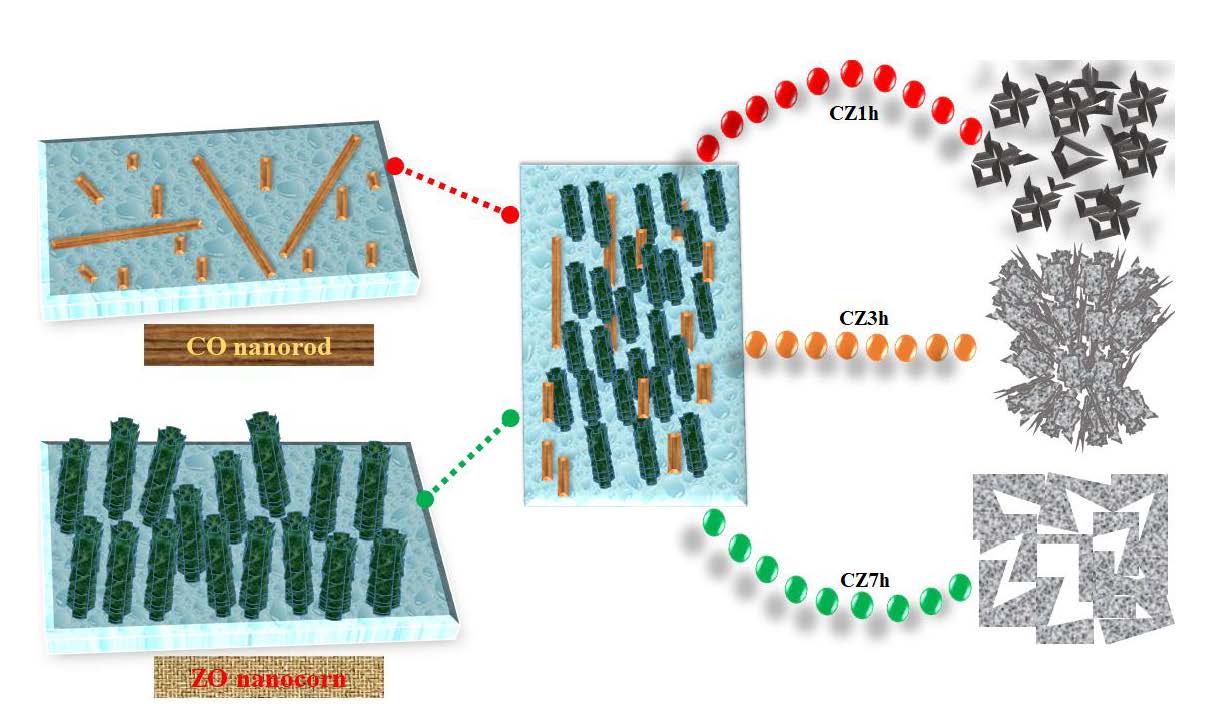Preprint
Article
Effect of Time on a Hierarchical Corn Skeleton-Like Composite of CoO@ZnO as Capability Electrode Material for High Specific Performance Supercapacitors
Altmetrics
Downloads
295
Views
367
Comments
0
A peer-reviewed article of this preprint also exists.
supplementary.pdf (1.25MB )
This version is not peer-reviewed
Submitted:
26 October 2018
Posted:
26 October 2018
You are already at the latest version
Alerts
Abstract
CoO-ZnO-based composites have attracted considerable attention for the development of energy storage devices because of their multifunctional characterization and ease of integration with existing components. This paper reports the synthesis of CoO@ZnO (CZ) nanostructures on Ni foam by the CBD method for facile and eco-friendly supercapacitor applications. The formation of a CoO@ZnO electrode functioned with cobalt, zinc, nickel and oxygen groups was confirmed by X-ray diffraction, X-ray photoelectron spectroscopy, low and high-resolution of scanning electron microscopy, and transmission electron microscopy. The as-synthesized hierarchical nanocorn skeleton-like structure of CoO@ZnO-3h (CZ3h) electrode delivered a higher specific capacitance of 1136 F/g at a current density of 3 A/g with outstanding cycling stability, showing 98.3% capacitance retention over 3000 cycles in an aqueous 2 M KOH electrolyte solution. This retention was significantly better than that of other prepared electrodes, such as CoO (CO), ZnO (ZO), CoO@ZnO-1h (CZ1h), and CoO@ZnO-7h (CZ7h) (274, 383, 240 and 537 F/g, respectively). This superior capacitance was attributed to the ideal surface morphology of CZ3h, which is responsible for the rapid electron/ion transfer between the electrolyte and electrode surface area. The enhanced features of the CZ3h electrode highlight potential applications in high performance supercapacitors, solar cells, photocatalysis, and electrocatalysis.

Keywords:
Subject: Engineering - Energy and Fuel Technology
Copyright: This open access article is published under a Creative Commons CC BY 4.0 license, which permit the free download, distribution, and reuse, provided that the author and preprint are cited in any reuse.
MDPI Initiatives
Important Links
© 2024 MDPI (Basel, Switzerland) unless otherwise stated






